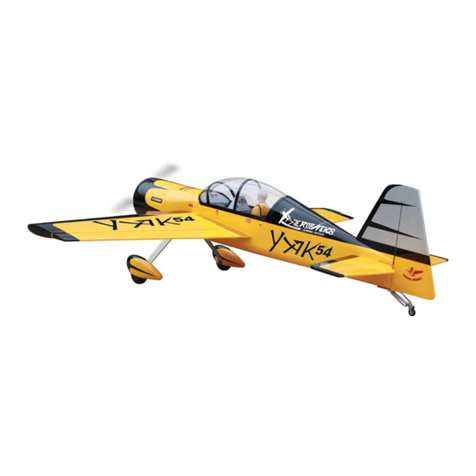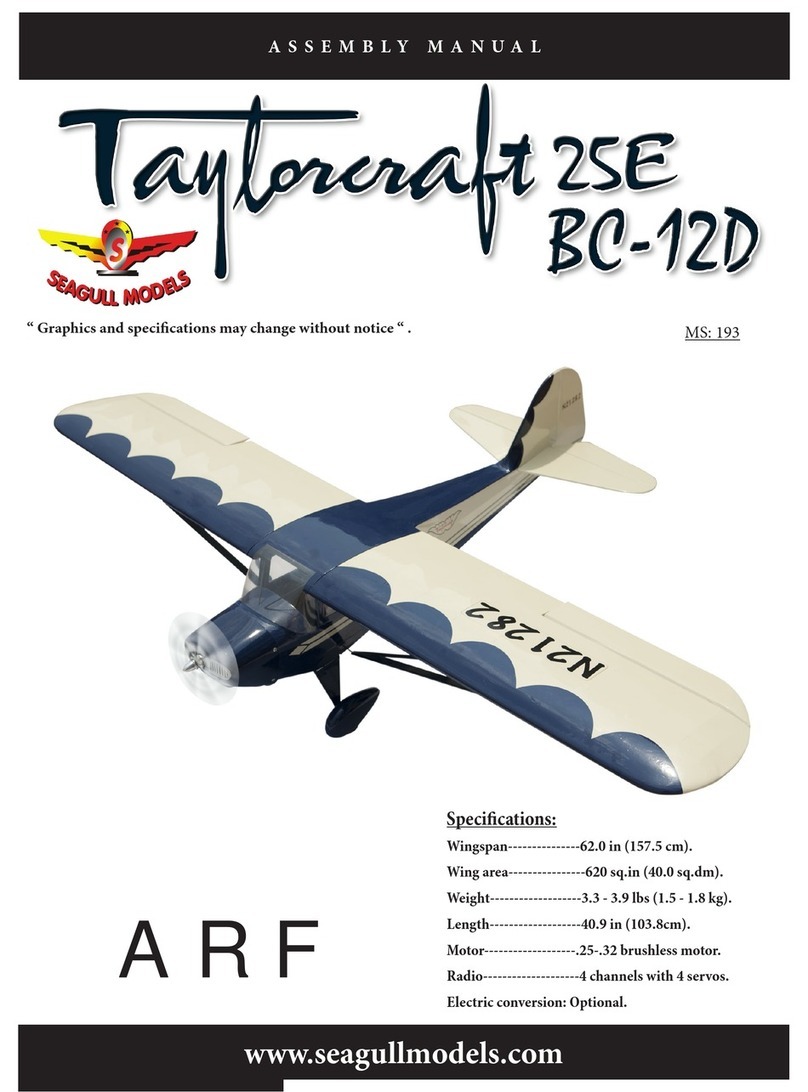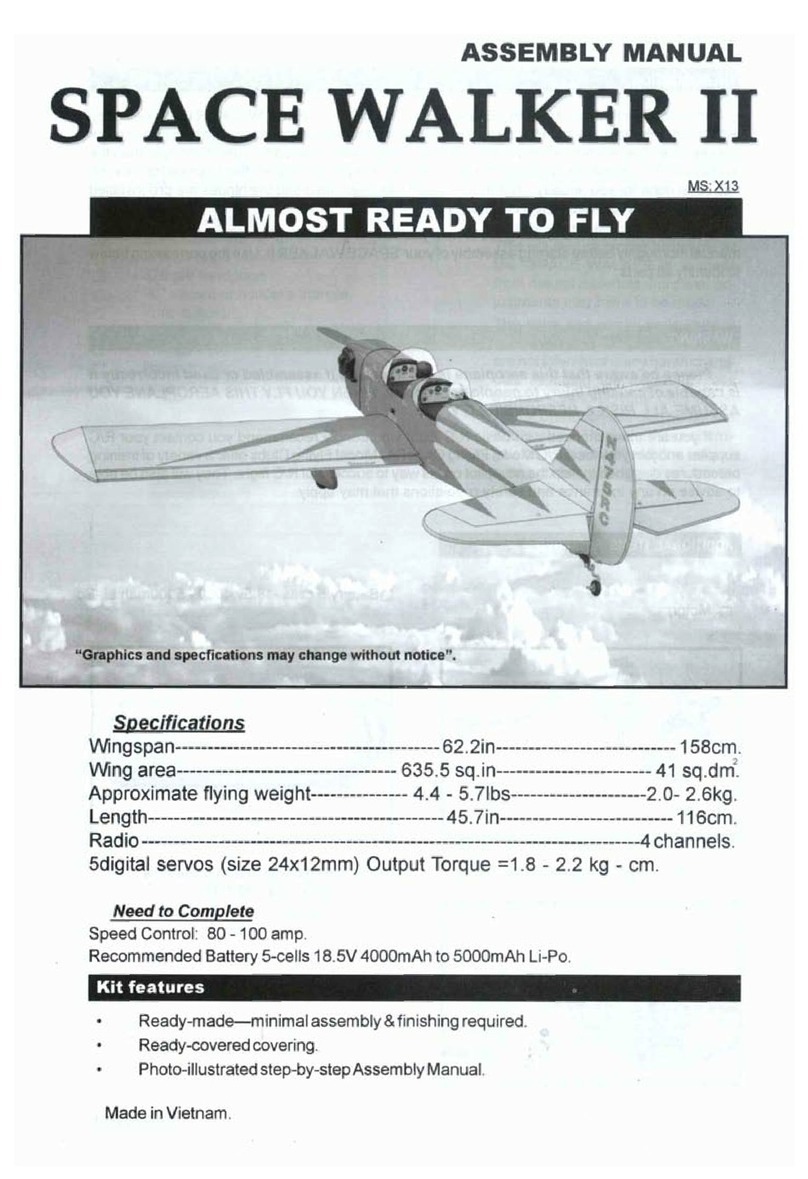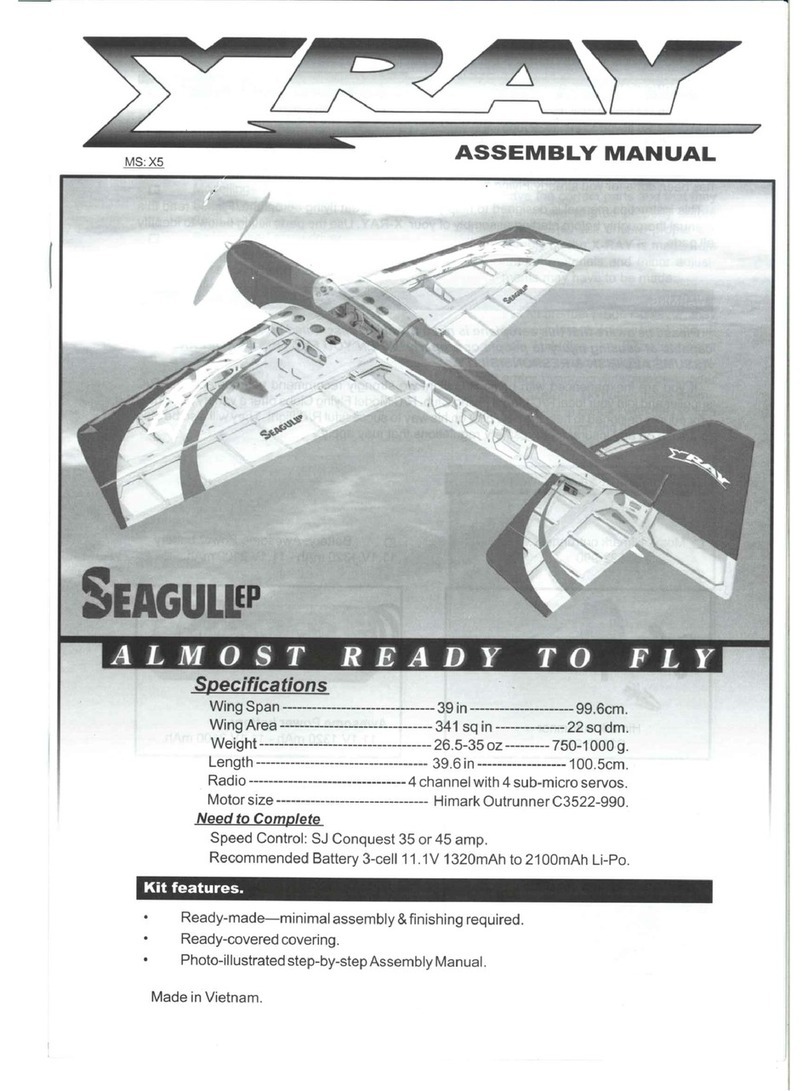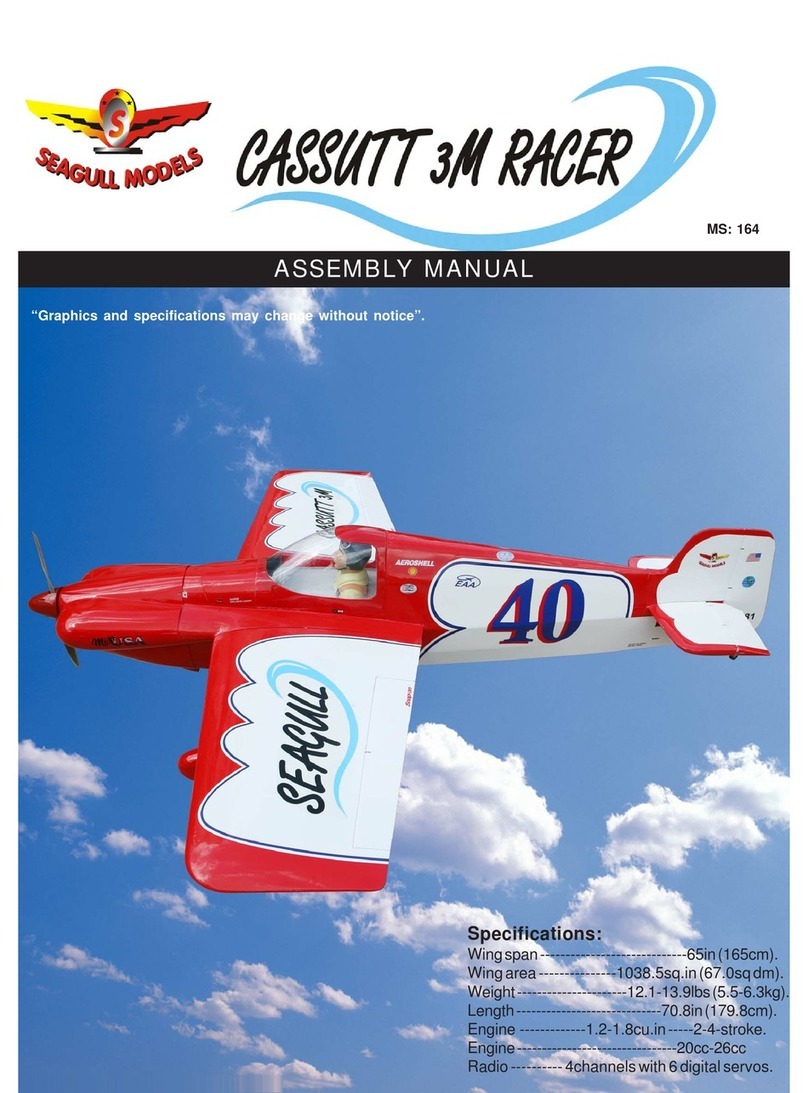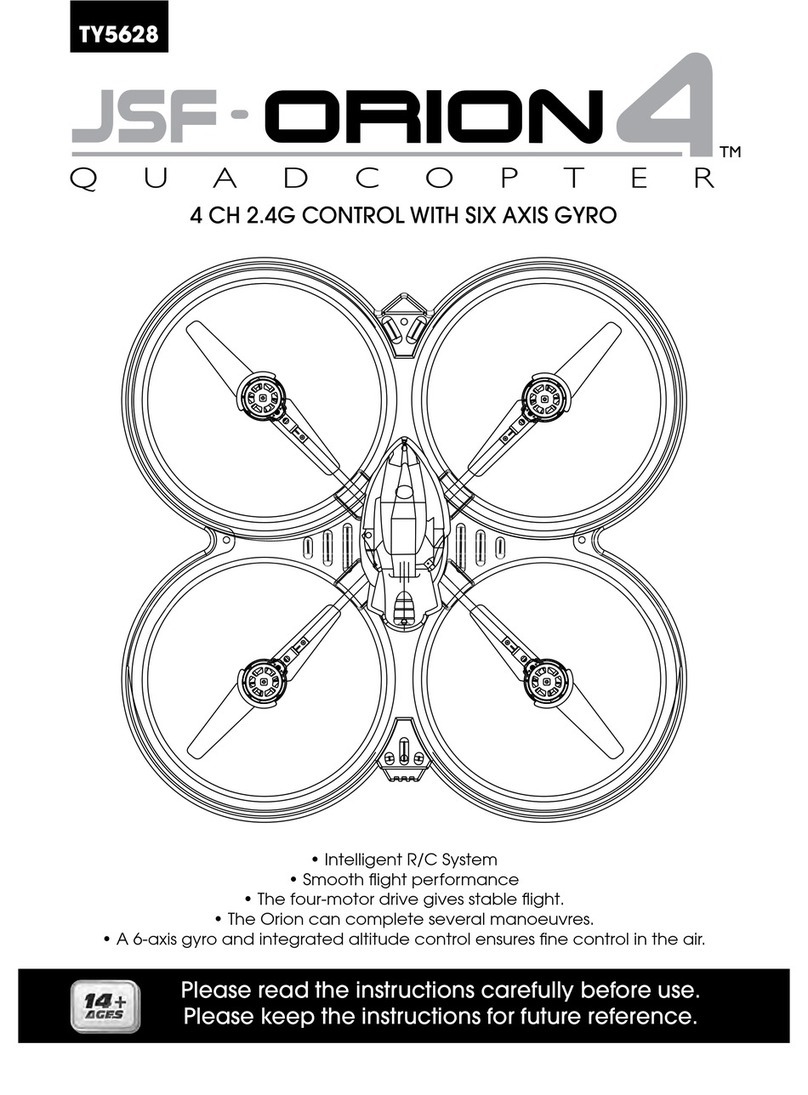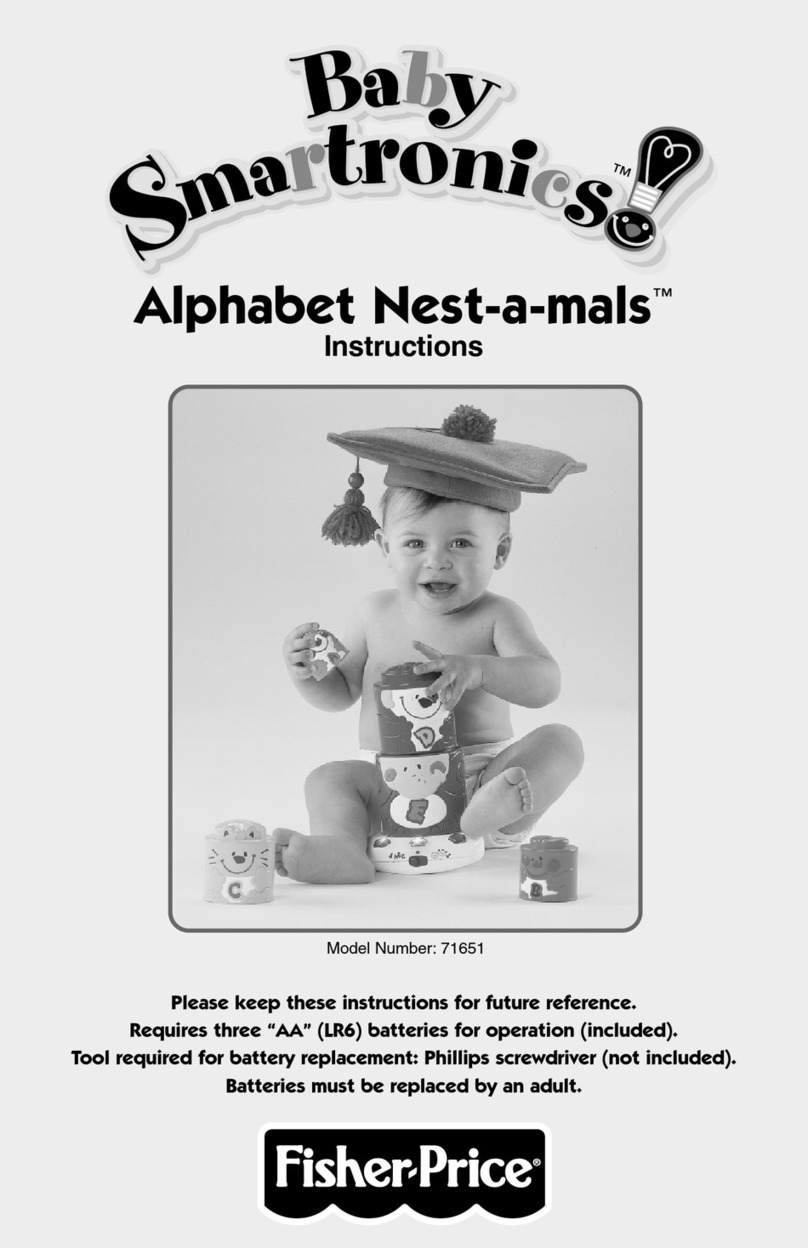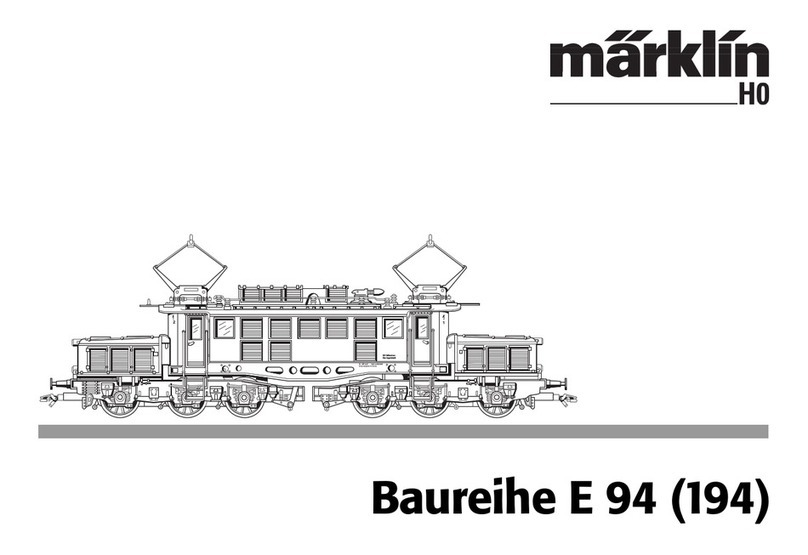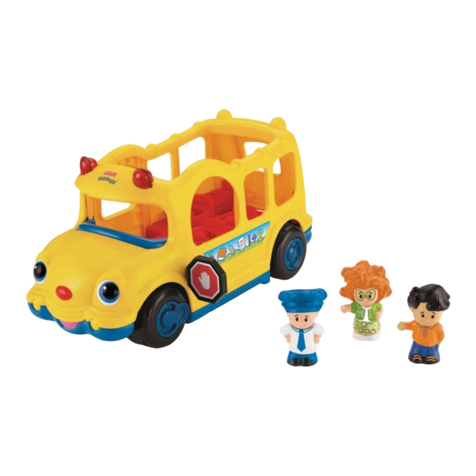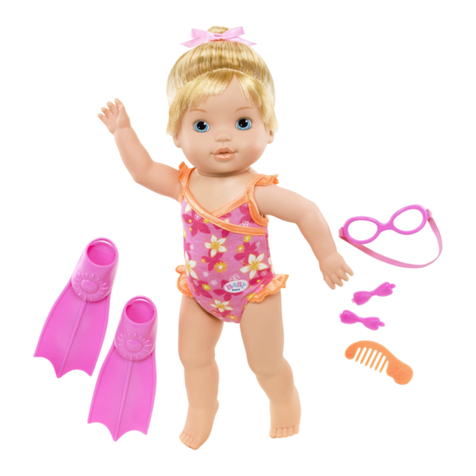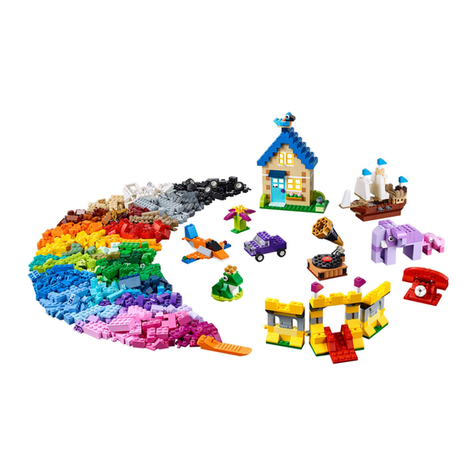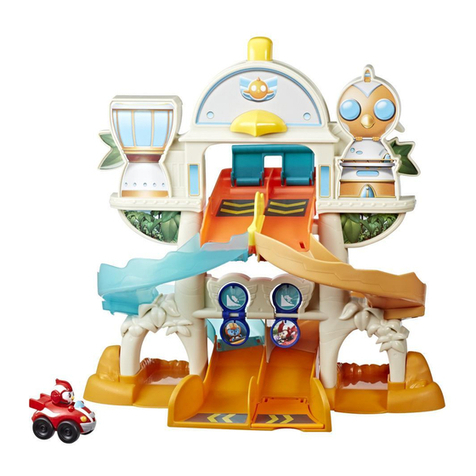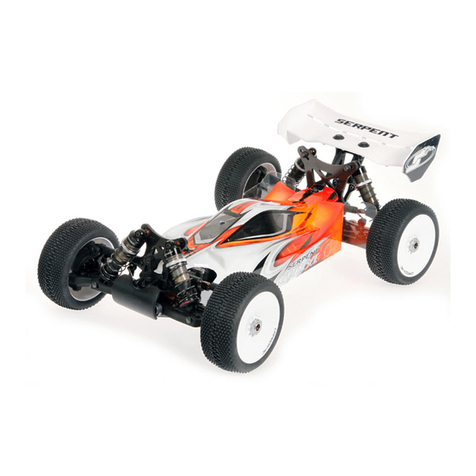Seagull Fair Child PT19 User manual

“Graphics and specifications may change without notice”.
MS:136
ASSEMBLY MANUAL
Specifications:
Wingspan----------------------------80.5in(204.5cm).
Wingarea-----------------965.7sq.in(62.3sqdm).
Weight--------------------------------11.9lbs(5.4kg).
Length------------------------------58.6in(148.8cm).
Engine ------------------ 0.91-1.2cu.in----2-stroke.
0.91-1.2cu.in ---4-stroke.
Radio-------------------5channelswith8 servos.
Speinglandinggear(included).

FAIR CHILD PT 19. Instruction Manual.
2
INTRODUCTION.
Thank you for choosing the PT 19 ARTF by SEAGULL MODELS. The PT 19 was designed with
the intermediate/advanced sport flyer in mind. It is a semi scale airplane which is easy to fly and
quicktoassemble.Theairframeisconventionallybuiltusingbalsa,plywoodtomakeitstrongerthan
theaverage ARTF,yet thedesignallowstheaeroplanetobekeptlight.Youwillfindthatmostofthe
work has been done for you already. The motor mount has been fitted and the hinges are pre-
installed. Flying the PT 19 is simply a joy.
This instruction manual is designed to help you build a great flying aeroplane. Please read this
manual thoroughly before starting assembly of your PT 19 . Use the parts listing below to identify
all parts.
WARNING.
Please be aware that this aeroplane is not a toy and if it is assembled or used incorrectly it
will cause injury to people or property. WHEN YOU FLY THIS AEROPLANE YOU ASSUME
ALL RISK & RESPONSIBILITY.
IfyouareinexperiencedwithbasicR/CflightwestronglyrecommendyoucontactyourR/Csupplier
and join your local R/C Model Flying Club. R/C Model Flying Clubs offer a variety of training
proceduresdesignedtohelpthe newpilotonhisway tosuccessfulR/C flight.Theywillalsobe able
to advise on any insurance and safety regulations that may apply.
KIT CONTENTS
1
2
9
3
4
5
8
6
7
10
4

3
www.seagullmodels.com
ADDITIONAL ITEMS REQUIRED.
0.91-1.2 2-stroke.
0.91-1.2 4-stroke.
Computer radio with 8 servos.
Glow plug to suit engine.
Propeller to suit engine.
Protective foam rubber for radio
system.
Siliconefuel line.
TOOLS & SUPPLIES NEEDED.
Thick cyanoacrylate glue.
30 minute epoxy.
5 minute epoxy.
Hand or electric drill.
Assorted drill bits.
Modellingknife.
Straight edge ruler.
2mm ball driver.
Phillips head screwdriver.
220 grit sandpaper.
90° square or builder’s triangle.
Wire cutters.
Masking tape & T-pins.
Thread-lock.
Paper towels.
The control surfaces, including the
ailerons, elevators, and rudder, are
prehinged with hinges installed, but
the hinges are not glued in place. It
is imperative that you properly
adhere the hinges in place per the
steps that follow using a high-quality
thin C/A glue.
2)Removeeach hinge fromthewing panel
and aileron and place a T-pin in the center of
each hinge. Slide each hinge into the aileron
untiltheT-pin is snug against the aileron.This
will help ensure an equal amount of hinge is
oneithersideofthe hingelinewhen theaileron
is mounted to the wing panel.
HINGING THE AILERONS .
Note:
1) Carefully remove the aileron from one
of the wing panels. Note the position of the
hinges.
Hinge.
3) Slide the aileron on the wing panel until
there is only a slight gap. The hinge is now
centered on the wing panel and aileron.
Remove the T-pins and snug the aileron
against the wing panel.Agap of 1/64” or less
shouldbemaintainedbetweenthe wing panel
andaileron.
T-pin.
1 Fuselage
2 Left wing panel
3 Right wing panel
4 Tail set (2)
5 Pilot (2)
6 Aluminum wing tube
7 Fiberglass cowl
8 Speing landing gear
9 wheels (2)
10 Hardware bag included
KIT CONTEN.TS

FAIR CHILD PT 19. Instruction Manual.
4
8)Afterboth ailerons are securely hinged,
firmly grasp the wing panel and aileron to
make sure the hinges are securely glued and
cannot be pulled out. Do this by carefully
applying medium pressure, trying to separate
the aileron from the wing panel. Use caution
not to crush the wing structure.
7) Repeat this process with the other wing
panel, securely hinging the aileron in place.
6) Using C/A remover/debonder and a
papertowel,removeany excess C/Agluethat
may have accumulated on the wing or in the
aileronhingearea.
5)Turnthe wing paneloveranddeflect the
aileron in the opposite direction from the
opposite side. Apply thin C/A glue to each
hinge,makingsurethattheC/Apenetrates into
both the aileron and wing panel.
Workthe aileronup anddownseveral
times to “work in” the hinges and
check for proper movement.
Note:
4) Deflect the aileron and completely
saturate each hinge with thin C/A glue. The
aileronsfrontsurface shouldlightlycontactthe
wing during this procedure. Ideally, when the
hinges are glued in place, a 1/64” gap or less
will be maintained throughout the lengh of the
aileron to the wing panel hinge line.
Thehingeis constructedof a special
material that allows the C/A to wick
or penetrate and distribute
throughout the hinge, securely
bonding it to the wood structure of
the wing panel and aileron.
Note:
Hinge.

5
www.seagullmodels.com
Aileroncontrolhorn.
INSTALL THE AILERONS CONTROL
HORN.
1) Locate the hardware necessary to install
the control horns for the ailerons.
2) Position the control horn on the bottom of
the aileron. You will see pre-drill hole 3mm for
the horn mounting screw on the aileron.
3) Place epoxy into hole. This will harden the
threads and prevent the crews from pulling
loose.
4) Thread a control horn end with aluminum
washer, lock nut until the top edge of the end is
18mm from the vase of the horn as shown.
3mm.
HINGING THE RUDDER.
Glue the rudder hinges in place using the
same techniques used to hinge the ailerons.
Hinge.
HINGING THE ELEVATOR.
Glue the elevator hinges in place using the
same techniques used to hinge the ailerons.
C/Aglue.
ALUMINUMWASHER.
ALUMINUMWASHER.
CONTROLHORN
M3 SCREW.
18mm.
Epoxy.
Wing
Wing
Epoxy.
M3LOCKNUT.
2 sets.
3x35mm.

FAIR CHILD PT 19. Instruction Manual.
6
Install the flap control horn using the same
methodas sameas theaileroncontrolhorns.
INSTALL FLAP CONTROL HORN.
2 sets.
3x30mm.
Aluminum Washer.
CONTROLHORN
M3 SCREW.
M3LOCKNUT.
Epoxy.
Aluminum Washer.
Flap.
CONTROLHORNM3SCREW.
M3 lock nut.
ALUMINUMWASHER. 18mm.
ALUMINUMWASHER.
Epoxy.
Epoxy.
Flap.
M2x6mm.
M2x6mm.
Screw.

7
www.seagullmodels.com
3mm.
Flap control horn.
Install the elevator control horn using the
same method as same as the aileron control
horns.
INSTALL ELEVATOR CONTROL HORN.
2 sets.
3x35mm.
AluminumWasher.
CONTROLHORNM3
M3LOCKNUT.
Epoxy.
AluminumWasher.
Horizontal
Stabilizer. Elevator.
M2x6mm.
Screw.
1.5mm.

FAIR CHILD PT 19. Instruction Manual.
8
Thread locker glue.
ENGINE MOUNT INSTALLATION.
1) Locate the items necessary to install the
engine mount included with your model.
2) Usefour4x30mm head boltsandfour 4mm
washers to attach the engine mount rails to
thefirewall.Tightenthescrews.Makesureto
use threadlock on the screws to help prevent
them from vibrating loose.
4x30mm.
INSTALL RUDDER CONTROL HORN.
3mm.
Repeat steps to install the rudder control
horn as same as steps done for ailerons.
Ruddercontrolhorn.
Elevator control horn.
veticalfin.
18mm.
Epoxy.
Horizontal
Stabilizer. Elevator.

9
www.seagullmodels.com
3) Carefully bend the second nylon tube
up at a 45º angle. This tube is the vent tube.
4) Test fit the stopper assembly into the
tank. It may be necessary to remove some of
the flashing around the tank opening using a
modeling knife. If flashing is present, make
sure none falls into the tank.
Venttube. Fuel pick up tube.
Fuel fill tube.
Plywood template.
1) Using a modeling knife, carefully cut
off the rear portion of one of the 3 nylon tubes
leaving 1/2” protruding from the rear of the
stopper. This will be the fuel pick up tube.
INSTALLING THE STOPPER ASSEMBLY.
2) Usingamodelingknife,cut one length
ofsiliconfuelline. Connect one endoftheline
totheweightedfuelpickup and the other end
to the nylon pick up tube.
5) With the stopper assembly in place,
the weighted pick-up should rest away from
therear of the tank and move freely inside the
tank. The top of the vent tube should rest just
below the top of the tank. It should not touch
the top of the tank.
6) When satisfied with the alignment of
the stopper assembly tighten the 3 x 20mm
machine screw until the rubber stopper ex-
pands and seals the tank opening. Do not
overtighten the assembly as this could cause
the tank to split.
FUEL TANK INSTALLATION.
You should mark which tube is the vent
and which is the fuel pickup when you attach
fuel tubing to the tubes in the stopper. Once
thetankisinstalledinsidethe fuselage, it may
be difficult to determine which is which.

FAIR CHILD PT 19. Instruction Manual.
10
THROTTLE SERVO ARM INSTALLATION.
Installadjustableservoconnectorinthe servo
arm as same as picture below:
AdjustableServo
connector.
Servoarm.
Loctite secure.
1PCS.
Throttleservoarm.
Elevatorservoarm.
Rudderservoarm.
INSTALLING THE FUSELAGE SERVOS.
1) Installtherubbergrommetsandbrass
colletsontothe throttleservo. Testfittheservo
into the aileron servo mount.
2) Secure the servos with the screws pro-
vided with your radio system.
Because the size of servos differ, you
mayneedto adjustthesize oftheprecut open-
ing in the mount. The notch in the sides of the
mount allow the servo lead to pass through.
Throttle servo.
Elevator servo.
Rudder servo.
7) Slide the fuel tank into the fuselage. Guide
the lines from the tank through the hole in the
firewall.
Fueltank.
Epoxy.
Fueltank.
8) Use plywood template to hold in place
the fuel tank with C/A glue to secure the fuel
tank inside the fuselage.
Plywood template.
Venttube.
Fuel pick up tube.
Fuel fill tube.
Blow through one of the lines to en-
sure the fuel lines have not become kinked
inside the fuel tank compartment. Air
should flow through easily.

11
www.seagullmodels.com
Switch.
Trimand cut.
3/32” Hole.
INSTALLING THE SWITCH.
Installtheswitchinto the precutholeinthe
side, in the fuselage.
INSTALLING THEAILERON - FLAP SERVOS.
Servos. Smallweight.
Thread.
1) Usingasmallweight(Weightedfuel pick-up
workswell)andstring, feedthestring through
the wing as indicated.
Because the size of servos differ, you
mayneedtoadjustthesizeof theprecutopen-
ing in the mount. The notch in the sides of
themountallowtheservoleadtopassthrough.
String.
Small weight.
2) Place the servo between the mounting
blocksand spaceitfromthehatch.Usea pencil
to mark the mounting hole locations on the
blocks.
3) Use drill bit in a pin vise to drill the mouting
holes in the blocks.
5) Use dental floss to secure the connection
so they cannot become unplugged.
4) Apply 2-3 drops of thin C/A to each of the
mounting holes. Allow the C/Ato cure without
using accelerator.

FAIR CHILD PT 19. Instruction Manual.
12
6) Secure the servo to the aileron hatch using
Phillips screwdriver and the screws provided
with the servo.
7) Apply 1-2 drops of thin C/A to each of the
mounting tabs. Allow the C/A to cure without
using accelerator.
C/Aglue.

13
www.seagullmodels.com
M2x12mm.
M2x12mm.
Attach the string to the servo lead and carefully thread it though the wing.
Flap servo.
Aileronservo.
Wing rib.
Small weight.
String.
8) A string has been provided in the wing to
pull the aileron lead through to the wing root.
Remove the string from the wing at the servo
location and use the tape to attach it to the
servoextensionlead.Pull the leadthroughthe
wing and remove the string.
Flap servo.
Aileronservo.

FAIR CHILD PT 19. Instruction Manual.
14
8) Reinstall the servo horn by sliding the
connector over the pushrod wire. Center the
throttle stick and trim and install the servo horn
perpendicular to the servo center line.
Machinescrew M4x30mm.
Pushrodwire.
7) Slide the throttle pushrod wire into the tube.
Position the engine between the mounts. Use
four M4x30mm machine screws to secure the
engine to the mount as shown.
5) Slide the pushrod tube in the firewall and
guide it through the fuel tank mount. Use
medium C/A to glue the tube to the firewall and
the fuel tank mount.
6) Connect the Z-bend in the 450mm throttle
pushrod to the outer hole of the carburetor arm.
2) Use a pin drill and 4mm drill bit to drill a
small indentation in the mount for the engine
mounting screw.
3) Use a drill to drill the four holes in the engine
mount rails.
4) On the fire wall has the location for the
throttle pusshrod tube (pre-drill).
4.5mm.
Pushrod tube hole.
4mm.
150mm.
MOUNTING THE ENGINE.
1) Positiontheenginewiththedrivewasher
(150mm) forward of the firewall as shown.

15
www.seagullmodels.com
Trim and cut.
COWLING.
Trim and cut.
1) Slide the fiberglass cowl over the en-
gineandline up thebackedgeof the cowlwith
themarksyoumadeonthe fuselage then trim
and cut as shown.
9) Move the throttle stick to the closed position
and move the carburetor to closed. Use a 2.5mm
hex wrench to tighten the screw that secures
the throttle pushrod wire. Make sure to use
threadlock on the screw so it does not vibrate
loose.
Trim and cut.
Becauseofthesize of the cowl,itmaybe nec-
essarytouseaneedlevalve extension for the
highspeedneedlevalve. Make thisoutofsuf-
ficient length 1.5mm wire and install it into the
end of the needle valve. Secure the wire in
placebytighteningtheset screw in the sideof
the needle valve.
2) While keeping the back edge of the
cowl flush with the marks, align the front of
thecowlwiththecrankshaftoftheengine. The
front of the cowl should be positioned so the
crankshaft is in nearly the middle of the cowl
opening.Usethespinnerbackplateasaguide.
Hold the cowl firmly in place using pieces of
masking tape.
C\Aglue.

FAIR CHILD PT 19. Instruction Manual.
16
The propeller should not touch any part
of the spinner cone. If it does, use a
sharp modeling knife and carefully trim away
the spinner cone where the propeller comes
in contact with it.
INSTALLING THE SPINNER.
Install the spinner backplate, propeller and
spinner cone.
2)Using amodelingknife,carefullyremove
the covering at mounting slot of horizontal
stabilizer.
INSTALLINGTHEHORIZONTALSTABILIZER.
Drawcenter line.
1) Using a ruler and a pen, locate the
centerline of the horizontal stabilizer, at the
trailingedge,and place amark. Useatriangle
and extend this mark, from back to front,
across the top of the stabilizer. Also extend
thismarkdownthebackofthe trailing edge of
the stabilizer.
Machine screw M3x10mm.
Needlevalve.
3) Installthe muffler and mufflerextension
onto the engine and make the cutout in the
cowl for muffler clearance. Connect the fuel
and pressure lines to the carburetor, muffler
and fuel filler valve. Secure the cowl to fuse-
lage using the M3x10mm screws.
Needlevalve.

17
www.seagullmodels.com
Removethecovering.
6) With the stabilizer held firmly in place,
use a pen and draw lines onto the stabilizer
where it and the fuselage sides meet. Do this
on both the right and left sides and top and
bottom of the stabilizer.
4) Install the stabilizer onto the fuselage.
Align the centerline drawn on the top and the
rear of the stabilizer with the centre of the fu-
selage. When that is aligned, hold the stabi-
lizer in that position using T-pins or masking
tape. Align the horizontal stabilizer with the
wing. When viewed from the rear, the hori-
zontal stabilizer should be level with the wing.
Ifitisnot level, usesandpaperandsanddown
the high side of the stabilizer mounting plat-
form until the proper alignment is achieved.
The tips of the stabilizer should also be equal
distance from the tips of the wing.
3) Put the stabilizer into place in the
position of the fuselage.
5) When you are satisfied with the align-
ment, hold the stabilizer in place with T- pins
or masking tape, but do not glue at this time.
Pen.
7) Remove the stabilizer. Usingthelines
youjustdrewasaguide, carefully remove the
covering from between them using a model-
ingknife.
Removethecovering.
Epoxy.
8) Using a modeling knife, carefully re-
move the covering that overlaps the stabilizer
mounting platform sides in the fuselage. Re-
move the covering from both the top and the
bottom of the platform sides.
9) When you are sure that everything is
aligned correctly, mix up a generous amount
of 30 Minute Epoxy. Apply a thin layer to the
bottom of the stabilizer mounting area and to
the stabilizer mounting platform sides in the
fuselage. Putting the stabilizer in place and
realign. Double check all of your measure-
ments once more before the epoxy cures.
Holdthestabilizerin placewithT-pinsormask-
ing tape and remove any excess epoxy using
a paper towel and rubbing alcohol.
When cutting through the covering to
remove it, cut with only enough pressure
toonlycut through thecovering itself. Cut-
ting into the balsa structure may weaken
it.

FAIR CHILD PT 19. Instruction Manual.
18
90º
Vertical
Stabilizer.
Horizontal
Stabilizer.
3) Slide the vertical stabilizer back in
place. Using a triangle, check to ensure that
theverticalstabilizerisaligned90º to the hori-
zontal stabilizer.
Remove covering.
Fill epoxy.
2) While holding the vertical stabilizer
firmly in place, use a pen and draw a line on
each side of the vertical stabilizer where it
meets the top of the fuselage.
Fill epoxy.
INSTALLINGTHEVERTICALSTABILIZER.
1) Using a modeling knife, remove the
covering from over the precut hinge slot cut
into the lower rear portion of the fuselage.
Fill epoxy.
10) After the epoxy has fully cured, re-
move the masking tape orT-pins used to hold
the stabilizer in place. Carefully inspect the
glue joints. Use more epoxy to fill in any gaps
that may exist that were not filled previously
and clean up the excess using a paper towel
and rubbing alcohol.

19
www.seagullmodels.com
4) When you are sure that everything is
alignedcorrectly,mixup agenerousamount of
Flash30 MinuteEpoxy. Applyathinlayertothe
mounting slot and to bottom of the vertical sta-
bilizer mounting area. Apply epoxy to the bot-
tomandtopedgesofthe filler blockandtothe
lower hinge also. Set the stabilizer in place
andrealign. Doublecheckallofyourmeasure-
mentsoncemorebeforethe epoxycures.Hold
the stabilizer in place with T-pins or masking
tape and remove any excess epoxy using a
papertowel and rubbing alcohol. Allowtheep-
oxy to fully cure before proceeding.
AILERONPUSHRODHORN INSTALLATION
M3 lock nut.
M3clevis.
90mm.
110mm.

FAIR CHILD PT 19. Instruction Manual.
20
1
2
3
4
56
7
INSTALLING TEXTURED
LANDING GEAR.
4.
3.
5.
1.
2.
INSTALLING THE FLAP PUSHROD.
M2locknut. Wing.
Flap.
Repeat theprocedureforthe aileron pushrod.
Wing.
Aileron.
M3locknut.
8
Repeat the procedure for the other aileron servo.
Aileron.
Wing.
Aileron.
Table of contents
Other Seagull Toy manuals
Popular Toy manuals by other brands

Eduard
Eduard P-51D interior S.A. Assembly instructions

Spectra
Spectra KT2007 user manual
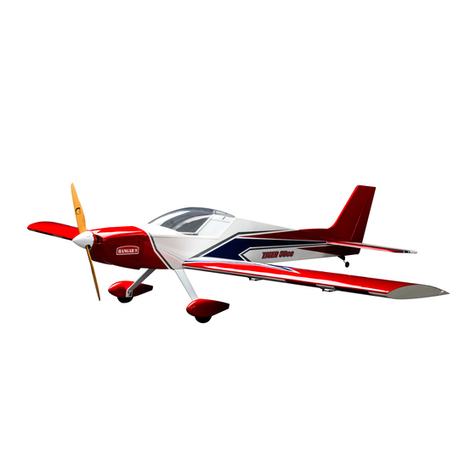
Horizon Hobby
Horizon Hobby HANGER 9 Tiger 30cc instruction manual

Thames & Kosmos
Thames & Kosmos 620380 Experiment manual
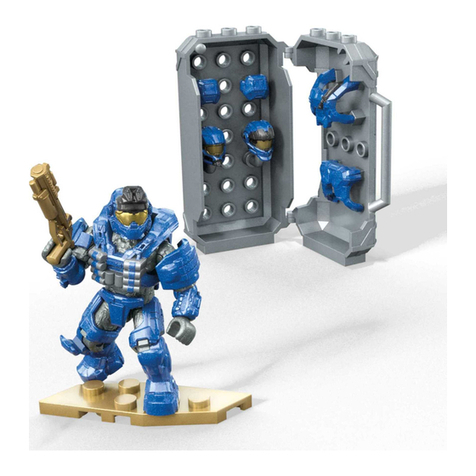
Mega Construx
Mega Construx HALO PRO BUILDERS SPARTAN GRENADIER ARMOR PACK... manual
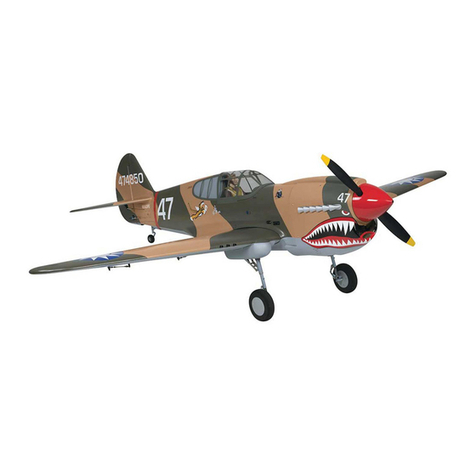
Top Flite
Top Flite P-40 Warhawk Assembly instructions
